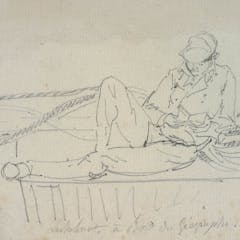
Articles on Australian history
Displaying 21 - 40 of 363 articles

There’s been a long-standing debate over whether dingoes started out wild or domesticated. One thing is clear – they had a close relationship with First Peoples.

Fifty years ago today, after a prolonged and controversial period of construction, the Sydney Opera House was officially opened by Queen Elizabeth II.

Voice supporters are not looking for division, but rather a desire to play a role in the future of a nation that accepts it’s our country, too.

For over 100 years, the Victorian school curriculum has failed to give generations of students the chance to learn about Indigenous political movements.

In its early years, the Australian Women’s Weekly was careful to balance is political perspective, but played a role in raising awareness of important issues.

So showy and ubiquitous, jacarandas can be mistaken for natives, but they originate in South America, and were introduced to Australia in the 19th century.

Killing for Country does brilliantly for one group of families what a robust, locally grounded truth-telling process might do for the whole nation.

The medieval is part of the mosaic of modern Australia. Our nation’s heritage on this island continent is full of it: in aesthetics, institutions, laws, languages, identities, moralities.

What did Australians do online in the 1990s? Shared bioinformatics data, made cyberfeminist zines, cruised the information superhighway …

While most repeat referendums fail, it is possible to succeed if the referendum proposal is altered or untethered from an unpopular element.

Donald Horne’s genius was his ability to capture on the page a personal intellectual journey that reflected one the nation was also taking.

This new comedic musical is not just a dramatisation of the events of 1975, it is also an attempt to understand our maddening political culture.

Across the continent, diverse, adaptable fishing practices, recipes and rituals were a cornerstone of Indigenous life at the time of first contact – and many remain so to this day.

When Doris Taylor became paralysed, her mother was advised to put her in a Home for Incurables. Instead, Doris helped elect a reforming South Australian premier and founded a national institution.

Clare Wright has spent ten years researching the history of these groundbreaking petitions. Though few Australians have heard of them, she writes, we can learn much from the story of their creation.

Aboriginal people in 1951 framed cultural practice as labour and as a tool for advocacy for Aboriginal rights stretching across the continent.

The Victorian Supreme Court has determined the descendants of Ned Kelly’s family are not a distinctive cultural group with the right to protections of their ‘intangible cultural heritage’.

Police matrons in the 1800s opened the door for women to join the police force, yet most of us have never heard of them.

Western music was often taught to Aboriginal people as preparation for assimilation into white Australian society – but Aboriginal people continued to play the violin even when not prescribed.

Two previously unknown chapters of a 19th century French botanist’s journal offer insights into his fears and ambitions, scientific observations, and discussions of the effects of colonisation.
